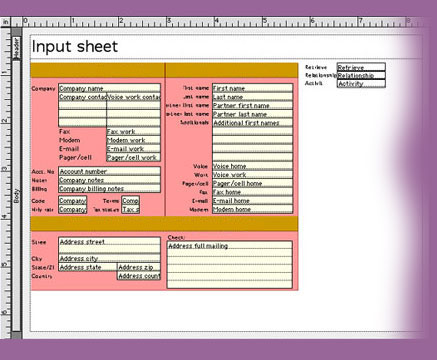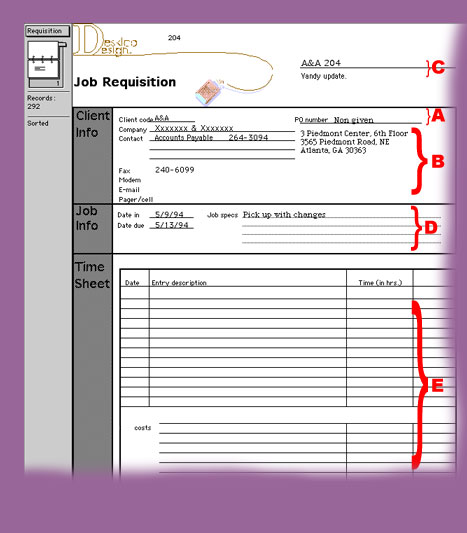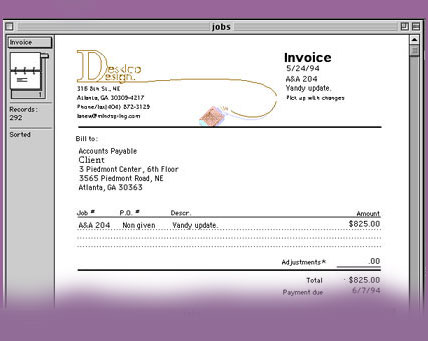Case Study: DesktopDesign Database
In "The Computer as an Expressive Medium," the relational database of DesktopDesign illustrates the basic ability of expressing relationships between bodies of data.
The integrity of the structure is key to using the timeless power of relational databases. Maintaining strict rules and well-defined relationships within and between each component of the database ensures correct, accurate and predictable behaviors. This system consists of three files: a client file, a job file, and a vendor services file.
The client file contains a record for each client with pertinent contact and business information.

The job file generates (among other forms) a job requisition and time sheet for each job that is initiated. Upon input, tracking of all costs and services associated with the job are facilitated.

An invoice is generated from data in various tables.

Aging reports rely on the integrity of the data types for accuracy.

The
vendor services file contains pricing and specification information
of frequently used vendors. Information from this file is
automatically pulled into the job file when needed, and automates
ordering, scheduling, markups and billing.
Go back to Maryann Westfall, the designer home page
Go back to Jumping Weasel, Inc. home page
Go back to JumpingWeasel.com Online Job Board home page
Go back to The Westfalls' personal home page
© 2004 Jumping Weasel Corporation. All rights reserved.
|
|
|
Professors: • Stephen Mamber |
Principles:• Understanding the • Translating computer code |
Other Course Papers:• Sim City (simulation)
Projects: |